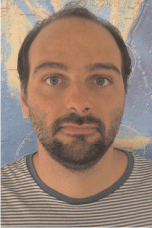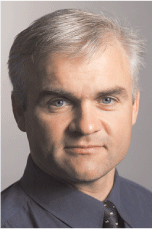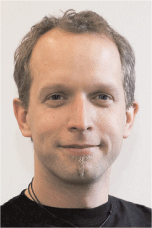Petroleum implications of stacked deltas in the Fairway Basin, offshore New Caledonia, Northern Tasman Frontier
Pierrick Rouillard A , Julien Collot B , Francois Bache C , Rupert Sutherland C , Karsten Kroeger C and Rob Funnell CA ADECAL-Zoneco.
B Dimenc.
C GNS-Science.
The APPEA Journal 54(2) 537-537 https://doi.org/10.1071/AJ13110
Published: 2014
Abstract
The Fairway Basin lies between Australia and New Caledonia in the northern Tasman Frontier area with water depths ranging from less than 1,000–2,400 m. This basin formed in Mid-to-Late Cretaceous during eastern Gondwana breakup and received detrital and pelagic sediments since that time. It is known for a 70,000 km2 bottom simulating reflector interpreted as either one of the world’s largest gas hydrate layers or as a regional diagenetic front. Seismic reflection data shows sedimentary thicknesses (up to 4 km) and geometries capable of trapping hydrocarbons. We interpret seismic stratigraphy and available well data in terms of paleogeography and tectonic evolution. This work allowed the discovery of a deeply buried delta probably of the same type as the deepwater Taranaki Delta. This stratigraphic framework is used to constrain multi-1D generation modelling and to test three main hypotheses of source rocks. The most likely scenario, similar to the one accepted for the Taranaki petroleum province, are a type-III and type-II source rocks intercalated in Cretaceous prograding series. Another possible scenario is a source rock equivalent to the East Australian Walloon Formation and occurrence of marine source rock in the pre-rift sequence. Although large modelled volumes at this stage are speculative due to limited data on source rock composition, richness and distribution, as well as on the presence and quality of reservoir and seal, this study confirms the prospectivity of the Fairway Basin and the need for more data to further assess this basin.

Pierrick Rouillard is an exploration geologist at the Geological Survey of New Caledonia. He has 6 years’ experience working at basin and reservoir scales. He coordinates the marine mineral resources division of the New Caledonia ZoNéCo Research Program. His main research interests are clastic sedimentology from shallow to deep water and seismic stratigraphy. Pierrick holds a PhD from the University of Nice Sophia-Antipolis defended in 2010 and funded by GDF-SUEZ. |

Julien Collot is geophysicist and leader of the marine geophysics team at the Geological Survey of New Caledonia. He holds a geophysics engineering degree from EOST (Strasbourg, France) and a PhD from the University of Brest (France). His PhD focused on the tectonic evolution of the Tasman Frontier and was conducted both in the Marine Geoscience Department of Ifremer and the Geological Survey of New Caledonia from 2006 to 2009. His interests include Tasman Frontier and New Caledonia geodynamics, subduction initiation and frontier exploration. |

Francois Bache is a senior geoscientist in the Marine Geoscience Department at GNS Science. He has a PhD in marine geology from the University of Brest, France. Francois specialises in seismic stratigraphy and has papers published about various topics and geographical areas, including New Zealand, Mediterranean Basin, Sultanate of Oman and Bolivia. He leads the GNS Science regional structure and tectonic history of Zealandia Project where he has worked since 2010. His interests include basin-scale analysis, subduction initiation and frontier basin exploration. |

Rupert Sutherland is a principal scientist in the Ocean Exploration Department at GNS. He has 25 years’ experience doing petroleum-relevant science and has published over 70 papers in peer-reviewed scientific journals. His specialist field is large-scale and small-scale tectonic processes, including global plate motions and sedimentary basin formation in the southwest Pacific. |

Karsten Kroeger is a geoscientist and basin modeller with GNS Science since 2008. He has gained experience in modelling as a post-doctoral fellow at GFZ German Research Center for Geosciences. He holds a diploma in geology from the Technical University in Karlsruhe and a PhD from the Johannes Gutenberg University of Mainz on Tertiary climate, paleoecology and carbonate sedimentology. |

Rob Funnell is a basin modeller with 20 years’ experience in thermal modelling of sedimentary basins and presently leads the petroleum geoscience department at GNS Science. He is interested specifically in the development of basin models to quantify petroleum prospectivity and risk. Rob is a graduate of the University of Waikato (MSc Hons, physics) and University of London (MSc, geophysics). Member: AAPG and the Geoscience Society of New Zealand. |
References
Auzende, J.M., Van De Beuque, S., Dickens, G., Francois, C., Lafoy, Y., Voutay, O., and Exon, N. (2000a). Deep sea diapirs and bottom simulating reflector in Fairway basin (SW Pacific) Marine Geophysical Research 21, 579–87.Auzende, J.M., Beneton, G., Dickens, G., Exon, N., Francois, C., Hodway, D., Juffroy, F., Lafoy, Y., Leroy, A., Van De Beuque, S., and Voutay, O. (2000b). Mise en évidence de diapirs mésozoiques sur la bordure orientale de la ride de Lord Howe (Sud-Ouest Pacifique) : campagne ZoNeCo 5 Comptes rendus de l’Académie des sciences, Série II, Sciences de la terre et des planètes 330, 209–15.
Baur, J., Sutherland, R., and Stern, T. (2013). Anomalous passive subsidence of deep-water sedimentary basins: a prearc basin example, southern New Caledonia Trough and Taranaki Basin New Zealand: Basin Research 25, 1–2.
Burns, R.E., Andrews, J.E., Van Der Lingen, G.J., Andrews, J.E., Churkin, M., Jr., Davies, T.A., Dumitrica, P., Edwards, A.R., Galehouse, J.S., Kennett, J.P., and Packham, G.H., 1973—Regional aspects of deep sea drilling in the Southwest Pacific, Lithostratigraphy of Eight Drill Sites in the South-west Pacific. Preliminary Results of the Deep Sea Drilling Project, 21.
Collot, J., Geli, L., Lafoy, Y., Vially, R., Cluzel, D., Klingelhoefer, F., and Nouzé, H., 2008—Tectonic history of northern New Caledonia Basin from deep offshore seismic reflection: Relation to late Eocene obduction in New Caledonia, southwest Pacific. Tectonics 27, TC6006.
Collot, J., Herzer, R., Lafoy, Y., and Geli, L. (2009). Mesozoic history of the Fairway-Aotea Basin: Implications for the early stages of Gondwana fragmentation. Geochemistry Geophysics Geosystems 10, Q12019.
Colwell, J.B., Foucher, J.P., Logan , G., and Balut, Y., 2006—Partie 2. Programme AUSFAIR (Australia–Fairway basin bathymetry and sampling survey) Cruise Report., Les rapports de campagnes à la mer, MD 153/AUSFAIR–ZoNéCo 1. and VT 82/GAB on board R/V Marion Dufresne. Institut Polaire Français Paul Emile Victor, Plouzané, France, p. Réf : OCE/2006/2005.
Exon, N., Lafoy, Y., Hill, P.J., Dickens, G., and Pecher, I. (2007). Geology and petroleum potential of the Fairway Basin in the Tasman Sea Australian Journal of Earth Sciences 54, 629–45.
Field, B.D., and Uruski, C.I. (1997). Cretaceous-Cenozoic geology and petroleum systems of the East Coast Region, New Zealand. Institute of Geological and Nuclear Sciences monograph 19, 301.
Funnell, R.H., and Stagpoole, V., 2011—Petroleum generation and migration modelling for the Capel and Faust basins, eastern offshore Australia, GNS Science Report 2011/22, Lower Hutt.
Herzer, R.H., Sykes, R., Killops, S.D., Funnell, R.H., Burggraf, D.R., Townend, J., Raine, J.I., and Wilson, G.J. (1999). Cretaceous carbonaceous rocks from the Norfolk Ridge system, Southwest Pacific; implications for regional petroleum potential NZ Journal of Geology and Geophysics 42, 57–73.
Ingram, F.T., and Robinson, V.A., 1996—Petroleum Prospectivity of the Clarence-Moreton Basin in New South Wales, In: Facer, R.A. (ed.), NSW Department of Mineral Resources, Petroleum Bulletin 3. Sydney, p133.
Kroeger, K.F., and Funnell, R. 2011—Generation and flow-path migration modelling of the Fairway Basin, New Caledonia, GNS Science Consultancy Report 2011/349. p36.
Klingelhoefer, F., Lafoy, Y., Collot, J., Cosquer, E., Géli, L., Nouzé, H., and Vially, R. (2007). Crustal structure of the basin and ridge system west of New Caledonia (southwest Pacific) from wide-angle and reflection seismic data Journal of Geophysical Research—Solid Earth 112, B11102.
Lafoy, Y., Pelletier, B., Auzende, J.M., Missègue, F., and Mollard, L. (1994). Tectonique compressive cénozoïque sur les rides de Fairway et Lord Howe, entre Nouvelle Calédonie et Australie. Comptes rendus de l’Académie des sciences, Série II, Sciences de la terre et des planètes 319, 1063–106.
Nouzé, H., Cosquer, E., Collot, J., Foucher, J.-P., Klingelhoefer, F., Lafoy, Y., and Géli, L. (2009). Geophysical characterisation of bottom simulating reflectors in the Fairway Basin (off New Caledonia, Southwest Pacific), based on high resolution seismic profiles and heat flow data Marine Geology 266, 80–90.
Pepper, A.S., and Corvi, P.J., 1995—Simple kinetic models of petroleum formation. Part I: oil and gas generation from kerogen. Marine and Petroleum Geology 12, 291–319.
Ravenne, C., De Broin, C.E., Dupont, J., Lapouille, A., and Launay, J., 1977—New Caledonia basin-Fairway Ridge: structural and sedimentary study. In: Technip (ed.), International Symposium on Geodynamics in the Southwest Pacific, Nouméa (New Caledonia), 145–154
Rouillard, P., Collot, J., Sutherland, R., Bache, F., Patriat, M., and Maurizot, P., submitted—Gondwana breakup to Tonga-Kermadec subduction: seismic stratigraphy of the Fairway Basin, Lord Howe Rise, southwest Pacific, Basin Research ID: BRE-121-2013
Sutherland, R., Viskovic, P., Bache, F., Stagpoole, V., Collot, J., Rouillard, P., Hashimoto, R., Hackney, R., Higgins, K., Rollet, N., Roest, W., and Patriat, M., 2012—Compilation of seismic reflection data from the Tasman Frontier region, southwest Pacific. GNS Science Report, 2012/01. p57.
Sutherland, R., Collot, J., Lafoy, Y., Logan, G.A., Hackney, R., Stagpoole, V., Uruski, C., Hashimoto, T., Higgins, K., Herzer, R.H., Wood, R., and Mortimer, N. (2010). Lithosphere delamination with foundering of lower crust and mantle caused permanent subsidence of New Caledonia Trough and transient uplift of Lord Howe Rise during Eocene and Oligocene initiation of Tonga-Kermadec subduction, western Pacific Tectonics 29, .
| Lithosphere delamination with foundering of lower crust and mantle caused permanent subsidence of New Caledonia Trough and transient uplift of Lord Howe Rise during Eocene and Oligocene initiation of Tonga-Kermadec subduction, western PacificCrossref | GoogleScholarGoogle Scholar |
Uruski, C., and Baillie, P. (2004). Mesozoic evolution of the Greater Taranaki Basin and implications for petroleum prospectivity APPEA 4, 385–396.


